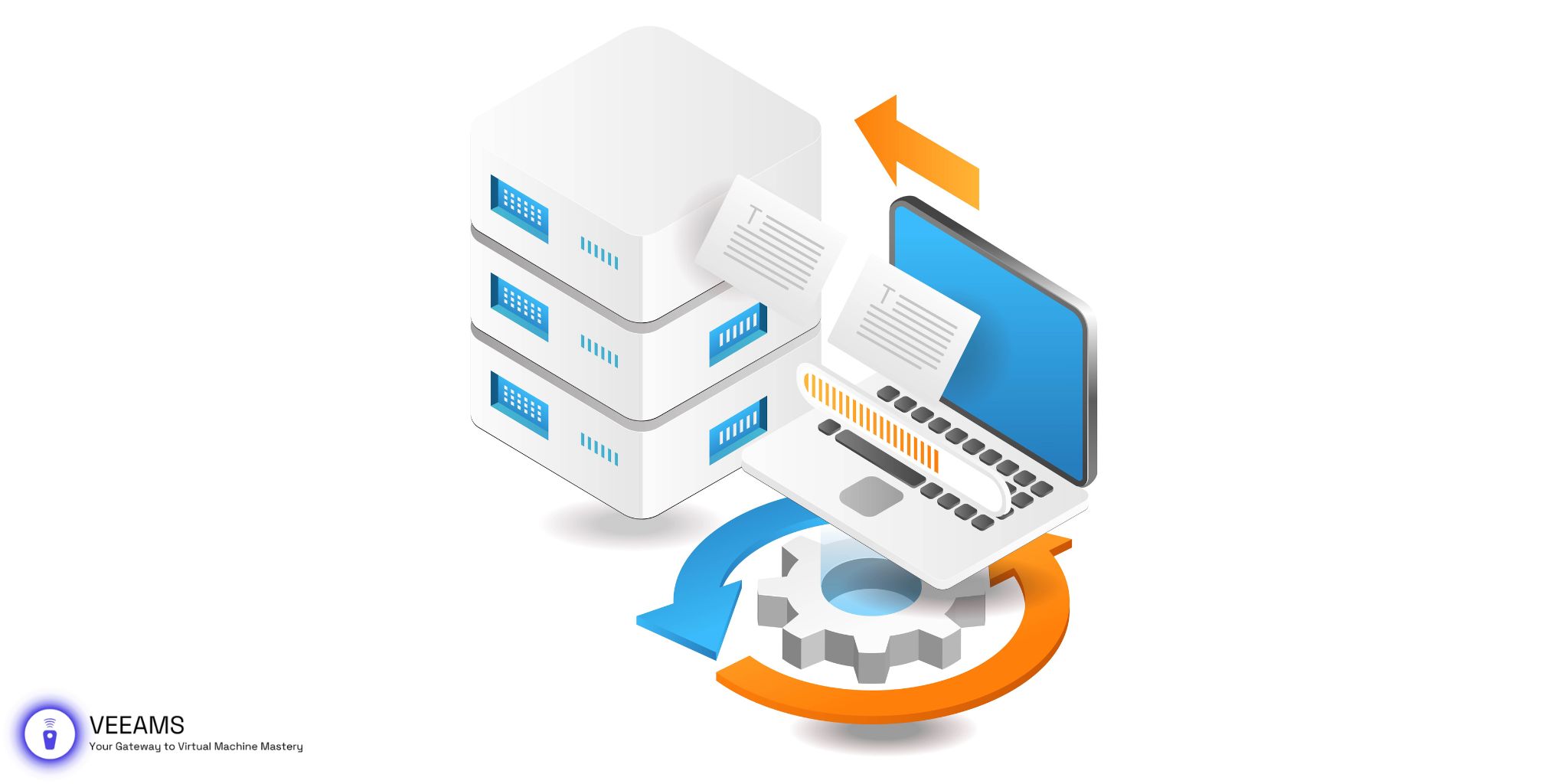Virtual Hard Disks (VHDs) are more than just storage containers for your virtual machines (VMs); they’re the backbone of your VM’s performance and efficiency. In a world where resources are precious, and speed is king, optimizing your VHDs isn’t just recommended; it’s essential. This guide dives deep into the realm of VHD optimization, unveiling the secrets to unlocking the full potential of your virtual machines.
Key Factors Affecting VHD Performance
Disk Type: The choice between fixed and dynamic disks is more than a matter of space utilization. Fixed disks allocate all designated space immediately, which can improve read/write times since the VHD doesn’t need to expand on the go. Dynamic disks, while more space-efficient, may suffer from fragmentation and slower access times as they grow.
Configuration Settings: Beyond simple allocation, the configuration of a VHD impacts its performance. The location on physical storage (e.g., SSD vs. HDD), the connection type (e.g., SATA vs. SCSI), and even the file format (VHD vs. VHDX) play crucial roles. VHDX files, for example, support larger storage capacities and have built-in resilience features that can improve performance in large-scale deployments.
Virtual Environment Specifics: The setup of the virtual environment, including the choice of hypervisor (e.g., Hyper-V, VMware), networking configurations, and even the guest operating system’s settings, can affect VHD performance. Hypervisor-specific features like Hyper-V’s Dynamic Memory can impact how resources are allocated and thus influence VHD performance.
Best Practices for VHD Configuration
Fixed vs. Dynamic VHDs for Different Use Cases: For most production environments, fixed VHDs are recommended due to their predictable performance. However, dynamic VHDs can be suitable for development or test environments where maximum performance isn’t critical but space efficiency is valued.
Optimal Allocation Size and Location: When configuring VHDs, aligning the VHD’s allocation unit size with the underlying physical storage’s allocation unit size can minimize disk-related performance overheads. Placing VHDs on appropriate storage media is equally important; high-performance VMs benefit from being stored on SSDs due to their faster read/write speeds compared to traditional HDDs.
Size Considerations and Configuration Settings: Properly sizing your VHDs from the outset can prevent performance degradation and operational issues down the line. Monitoring and adjusting as necessary based on usage patterns and growth expectations is vital. Within the virtual machine, ensure that the disk is configured with the correct controller type (IDE vs. SCSI) for your use case, as this can affect performance.
Leveraging Advanced Features: For Hyper-V users, features such as Generation 2 VMs offer performance improvements over Generation 1 VMs, including faster boot times and improved security features. Additionally, utilizing the VHDX format for your virtual disks can provide increased durability and performance benefits over the older VHD format due to its design improvements.
Incorporating these detailed factors and best practices into your VHD management strategy can significantly enhance the performance and efficiency of your virtual machines. By understanding the underlying mechanics of VHD performance and configuring your environment accordingly, you can achieve optimal results from your virtualized resources.
Advanced VHD Optimization Techniques
Automating with PowerShell: PowerShell is a powerful tool for automating VHD management and optimization tasks. You can use PowerShell scripts to automate tasks such as VHD creation, conversion (VHD to VHDX, and vice versa), resizing, and compaction. For instance, to resize a VHDX file, you can use the Resize-VHD cmdlet, specifying the path to the VHDX file and the desired size. Automating these tasks reduces manual effort and ensures consistent application of best practices across all VMs.
- Script for Automated Compaction: Create a PowerShell script that periodically checks and compacts dynamically expanding VHD/VHDX files that are not currently in use. This can reclaim unused space and improve disk efficiency.
Leveraging Hyper-V Features:
- Dynamic Memory: For Hyper-V, enabling Dynamic Memory allows Windows to re-allocate memory between running VMs based on demand, improving overall system efficiency.
- Integration Services: Ensure Hyper-V Integration Services are up-to-date for each VM. These services improve interaction between the physical host and the VM, offering enhancements in time synchronization, data exchange, and backup operations.
- Nested Virtualization: For development and testing environments, nested virtualization allows you to run a VM inside another VM, which can be beneficial for testing specific configurations without affecting the primary host system.
Adjusting Hardware Settings:
- BIOS/UEFI Settings: Ensure that virtualization extensions (VT-x for Intel CPUs and AMD-V for AMD CPUs) are enabled in the BIOS/UEFI. These extensions improve the performance of virtual machines.
- Network Adapter Configuration: Use VMQ (Virtual Machine Queues) for network adapters to improve network performance by offloading packet processing to the network hardware. This reduces the CPU load on the host system.

Monitoring and Maintaining VHD Performance
Performance Monitoring Tools:
- Resource Monitor and Performance Monitor: Use built-in Windows tools like Resource Monitor and Performance Monitor to track the performance of your VHDs. Monitor metrics such as disk read/write speeds, queue lengths, and error rates to identify potential bottlenecks.
- Hyper-V Manager: Hyper-V Manager provides real-time insights into VM performance, including CPU usage, memory allocation, and network statistics. Regularly reviewing these can help identify underperforming VMs that may require optimization.
Regular Maintenance Practices:
- Defragmentation: Although SSDs do not require defragmentation, if your VHDs are stored on traditional HDDs, periodic defragmentation can improve access times. Note that defragmentation should be performed from within the VM to optimize the file system.
- Disk Cleanup: Use disk cleanup tools within the VM to remove unnecessary files and free up space. For dynamic VHDs, this can also reduce the physical size of the disk file.
- Check for Alignment: Ensure that the VHD is properly aligned with the underlying physical storage. Misalignment can lead to inefficient disk access patterns and degrade performance.
- Update Virtual Machine Integration Services: Keeping the Integration Services updated ensures that the VM can communicate efficiently with the host, reducing overhead and improving performance.
Implementing these advanced optimization techniques and maintaining regular monitoring can significantly enhance the performance of your VHDs, leading to more efficient and reliable virtual machines. Always test changes in a controlled environment before applying them to production systems to ensure they produce the desired effects without unintended consequences.
Common VHD Performance Issues and Solutions
Issue 1: Slow Read/Write Speeds
- Cause: This can be due to disk fragmentation, poor network configuration for VHDs stored on network-attached storage, or insufficient underlying storage performance.
- Solution: For HDD-based storage, regular defragmentation within the VM can help. Ensure network settings are optimized for performance, and consider upgrading to faster storage solutions, such as SSDs, or employing storage solutions that support technologies like Storage Spaces Direct in Windows Server for better disk throughput.
Issue 2: VHD Corruption or Consistency Issues
- Cause: Abrupt shutdowns, hardware failures, or network disruptions during write operations can lead to VHD corruption.
- Solution: Regularly back up VHD files and implement journaling file systems within the VMs when possible. Use Hyper-V’s or VMware’s native snapshot and backup solutions to protect data integrity. In case of corruption, tools like
chkdskwithin the VM or VHD repair utilities can be employed to attempt recovery.
Issue 3: Dynamic Disk Expansion Limit Reached Unexpectedly
- Cause: Dynamic VHDs/VHDXs expand based on data written but can reach the physical storage limit unexpectedly, leading to VM failures.
- Solution: Monitor disk space utilization closely using scripts or management tools. Implement alerts for when usage approaches capacity. Consider switching to fixed-size VHDs for critical VMs or regularly reviewing and cleaning up unnecessary files within VMs to free up space.
Issue 4: Performance Degradation Over Time
- Cause: Fragmentation within the VHD, misaligned partitions, or the accumulation of temporary files and logs can degrade performance.
- Solution: Use disk optimization tools within the VM, such as defragmentation and disk cleanup utilities. Ensure partitions are aligned correctly when creating VHDs. Regularly audit VMs for unnecessary files and applications that can be removed to improve efficiency.
Issue 5: Insufficient Memory Allocation
- Cause: VMs with insufficient memory allocated can exhibit poor performance due to excessive paging.
- Solution: Monitor VM performance metrics to identify memory pressure issues. Adjust memory allocations based on actual needs, and consider enabling Dynamic Memory (for Hyper-V) to allow Windows to adjust memory allocation dynamically based on demand.
In conclusion, optimizing VHD performance is essential for efficient virtual machine operation. Here’s a streamlined approach to keep in mind:
- Stay Proactive: Regular monitoring and timely maintenance are your first line of defense against performance degradation.
- Implement Best Practices: Apply the configuration and optimization strategies discussed to ensure your VHDs are running at their best.
- Embrace Innovation: Keep an eye on new technologies and updates in the field of virtualization to continuously improve performance.
The journey to optimal VHD performance is ongoing and requires both dedication and a willingness to adapt to new advancements. By focusing on these key areas, you’ll maintain a robust and efficient virtual environment.
In conclusion, optimizing VHD performance is essential for efficient virtual machine operation. Here’s a streamlined approach to keep in mind:
- Stay Proactive: Regular monitoring and timely maintenance are your first line of defense against performance degradation.
- Implement Best Practices: Apply the configuration and optimization strategies discussed to ensure your VHDs are running at their best.
- Embrace Innovation: Keep an eye on new technologies and updates in the field of virtualization to continuously improve performance.
The journey to optimal VHD performance is ongoing and requires both dedication and a willingness to adapt to new advancements. By focusing on these key areas, you’ll maintain a robust and efficient virtual environment.
